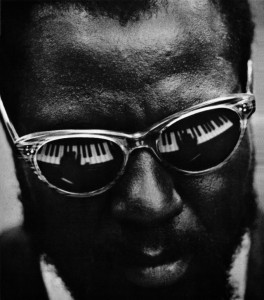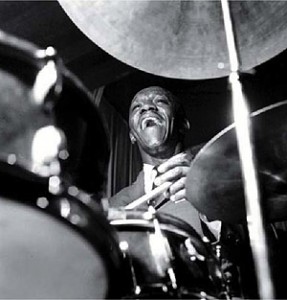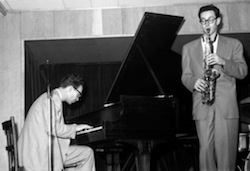One of my favorite parts of taking jazz improv classes (which I really only did for a few years at the community college level) was that at some point in the semester we would usually end up watching the Thelonious Monk documentary ‘Straight, No Chaser’. It is a great documentary, and I think I saw it 5-6 times in school. (As a quick aside, the other film that would find its way into the curriculum of many classes was the James Baldwin documentary ‘The Price Of The Ticket’, which I also saw 5-6 times… I don’t say this in any way as a complaint… Both of these are amazing documentaries, and if there are any two films every undergraduate should see 5-6 times in the pursuit of their Bachelor’s degree these are the two). Monk’s story was amazing, and whether or not he had mental illness to overcome (never confirmed though highly suspected), there can be no mistake that he was a musical genius. The intricacy and complexity of his playing rewards multiple listenings. At first you may be drawn to the sharply angular melodies or sharp syncopations. After another listen or two, your ear may start to recognize bits and pieces of the original melody, displaced by octaves and stretched or shrunk on the fly. And one of the most amazing things I tend to find in Monk’s playing is his impeccable timing… he knows when to stop and let the others play (usually so he could stand up and dance). It may seem quirky, but just about everything he played was very musical and very deeply thought out, even if the amount of time allowed for the thought was only a few moments.
And though I say above that the documentary is an amazing thing to see (even over and over again), it is also a little depressing. After spending a few weeks learning scales and how to play over different changes (and taking your 2 chorus turn when you were pointed to) we would be shown this video. Why, oh why, would an instructor do this to us? To crush our spirits? Show us what can’t really be attained? Because there was at least once or twice that this happened to me. Here I’ve been, with my saxophone or guitar for a few weeks, trying to become a better jazz improvisor, and then I’m shown videos of Thelonious Monk operating at a musical level that I imagine no one in that room could operate at. But what I finally got out of that video is that while we certainly can’t be Monk, there really isn’t anyone else that can be either. I’m not sure if this was something we were supposed to figure out on our own or not, or even if our instructor that this, but I think the point was that if we are going to make any mark in music, we need to figure out what our voice is going to be, then practice our art every day after that.
The problem with that kind of thinking is that it seems like these are clear cut steps. And there certainly aren’t. The more I’ve thought about it actually, it seems like you are supposed to cycle through these steps many many times. If you don’t, you get stuck, possibly too smoothed out. Not that you shouldn’t try to refine what you do, but if you aren’t re-exploring all the time either, chances are you aren’t experimenting either. There is music among the Thelonious Monk discs I ripped tonight that spans over three decades. And what it seems to me that Monk was able to do was find an excellent balance between these two extremes. Monk sounds like Monk in the 40s and in the 60s. He gets to play with most of the greats (but at the same time the greats got to play with him). And you can tell that he is listening and absorbing what he is hearing, and conversing with them all.
For the past few weeks, there has been a double bass in the window of a pawn shop here in Tacoma, and every time I have driven by it I have been tempted to take a look at it and see how much it is. While I play other instruments, bass is still the only one I probably can see myself getting back to performance level with again (over a few years to be sure). But yesterday, it was gone. I have other stories about instruments that I have seen in stores (some even that I worked in) that one day just disappears. Now – I certainly don’t have the money to just plop down and buy good instruments (assuming this was a good bass… a stretch I’m sure), but at the same time a number of these opportunities have passed me by and I begin to realize how much I miss performing. I should start to think about how to do that again. And soon. Because I think one of the things my composing needs more then anything else right now is my ear hearing what others do first hand again. Hearing Monk again playing with John Coltrane helped remind me of this.




